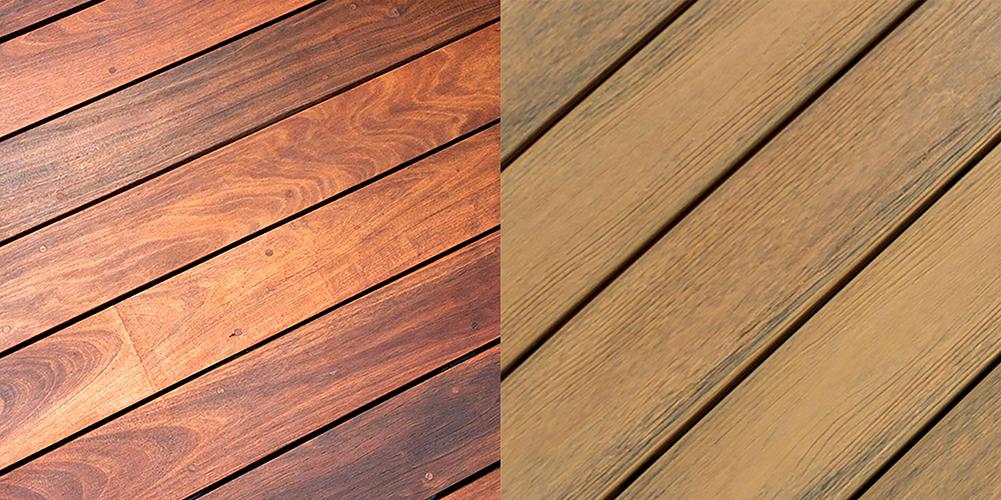
Natural Wood vs. Composite Decking
Natural Wood
At Adobe Lumber, we understand that choosing the right decking material is a crucial decision for any outdoor project. Natural wood decking offers timeless beauty and authenticity that many homeowners and builders cherish. The rich textures, unique grain patterns, and warm tones of wood create a classic, inviting outdoor space that blends naturally with the environment. However, natural wood requires regular maintenance, such as sealing, staining, and occasional repairs to prevent weathering, warping, or insect damage. While the initial cost of wood decking can be lower than some composite options, the ongoing upkeep can add to the total expense over time.
Composite decking
Composite decking, on the other hand, is engineered from a blend of wood fibers and recycled plastics, designed to mimic the look of natural wood while offering enhanced durability. One of the biggest advantages of composite decking is its low maintenance—no need for staining, sealing, or sanding, which saves homeowners time and effort. It is also resistant to rot, insects, and fading, making it ideal for harsh weather conditions. However, composite decking tends to come with a higher upfront cost compared to natural wood. Despite this, many find the long-term savings in maintenance and replacement costs justify the investment.
Ultimately, the choice between natural wood and composite decking depends on your priorities. If you value natural beauty and don’t mind the maintenance involved, wood is an excellent, often more affordable option upfront. If you prefer a low-maintenance, durable surface that stands up to the elements with minimal effort, composite decking is worth considering despite the higher initial price. At Adobe Lumber, we’re committed to helping you find the best material to fit your project needs, budget, and style preferences.



